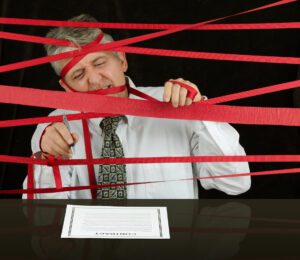My wife, Karen, and I just returned from our longest trip of 49 plus years together. We flew to Amsterdam and traveled by small cruise ship the Rhine, Main, and Danube rivers and the interconnecting canals of Europe. We visited Germany, Austria, and Hungary, ending in Budapest, over 1250 miles and 15 days later.
I had prepared by reading one history of The Netherlands and one of all Europe through the lens of Germany. We learned even more history and culture by daily ventures from the rivers to various historic towns and cities, all amazingly scenic. In hindsight, I would like to share some thoughts about our United States in comparison to even modern Europe and some other countries.
I mention other countries because our tour was with Scenic, a cruise line founded in Australia in 1986. The largest percentage of passengers onboard were Aussies, Canadians, then a few US citizens and fewer Brits.
Being with so many non-US citizens was also quite educational. We all compared notes on many topics. Most of them regularly vacation together on tours like this—often several per year–but this was our first. I felt like Gomer Pyle, USMC, amidst this group, saying Well, Gollee!
The experience itself was amazing. I felt like I should pinch myself everyday when we awoke to such fantastic views. It is a little bit like being able to lodge in a moving hotel and see the Sierras, the Rockies, the Smokies, and everything in between during 15 days!
Speaking of time, we spanned the past 2,000 years as we examined Roman ruins under the primary church building of Cologne, Germany, dating from the first centuries A.D. Many of the buildings in towns and small cities along these rivers are still in use although built in the 12th and 13th centuries. Here we have a ridiculously difficult time keeping up a property up for decades.
What struck me about Europe, however, is the observation and information from natives that all progress requires difficult to get permission by the local, state and federal governments.
Let me provide an example. In southern Germany, the fields of sugar beets, corn, and wheat look much like Missouri. But there are almost no farm houses anywhere among the fields and forests. Everyone lives in traditional homes, all within the small town boundary. One knows implicitly that some folks with enough money would want to have a place outside of town, perhaps on their own estate of 5 or 10 acres. The land use planning is obviously very strict.
One wealthy co-passenger whom I met lives up next to the Australian National Park land surrounding Melbourne Bay. He has lived there long enough that his concrete driveway was breaking up and he wanted to simply replace the concrete. This required a new engineering report and 21 months of time passage before his local government would issue his permit! All in all, it required three years just to replace the driveway concrete.
I found out this regulation is not unusual there. Perhaps that is part of the reason why houses often cost well over $1M. If the culture of a nation is dominated by such practices, most people will give up rather than improve their property, much less take the effort to start a new business.
We do have problems in the US. We are moving toward greater regulations of activities we have long taken for granted. But I am happy to report this is still the best place on earth to be entrepreneurial (and receive the advantages of entrepreneurship if one is not). We are also a huge land. I will still be primarily seeking out areas of our country to see and enjoy.
(Past performance is no guarantee of future results. The advice is general in nature and not intended for specific situations)

